Timeless
25 Jan 2016, by in Learning- 1
- 2
- 3
- 4
- 5
- 6
Sein Tempu Musica Danza y Poesia del Mediterraneo is a Buenos Aires-based quintet devoted to the research and interpretation of traditional music and dance from the Mediterranean ‘basin’, a place of ancient multicultural exchange, where most of the Argentinian migrants came from, as early late 18 century onwards. Their name can be translated as meaning ‘without time time’ or ‘timeless’. In honour of their mixed roots, these musicians have enthusiastically devoted themselves to building a bridge between traditional Argentinean music and Mediterranean tarantellas, ballads, and medieval music. Besides promoting moments of participation and learning with their audience and dance students, they have created a place for poetry that acknowledges the importance of intercultural respect.
Image: 1:
Sein Tempu, ‘Rhapsodia Mediterranea’, at Fusas y Corcheas Bar, Buenos Aires. Musicians: Ana Clara Cejas: flutes, second voice, Ana Carina Taborda: Italian percussion, Daniel Marin: guitar, bass, mandolin, Claudia Acuña: leading voice, guitar, Italian/arabic percussion, Bernado Rotelli: accordeon, Mediterranean percussion.
Attribution: With thanks to Jusy Corigliano and Sein Tempu.
Image 2:
SeinTempu and guest musician: Marina della Rocca on ‘organetto’ and South Italian percussion; poetry recital Silvia Tocco, dancers: barefoot flamenco performed by Valerie Romanin, Arabic and Argentinian folk dance style performed by Laura Martinez.
Attribution: With thanks to Cristophe Romanin.
Image: 3:
Clauda Acuna, at the Associazione Altrevie, Roma – 10 Setiembre 2014.
Attribution: With thanks to Claudio Bocci and Paolo Faiella.
Image 4:
Claudia Acuna and the Italian dancer Roberta Parravano Tanzerin, Associazione Altrevie, Roma – 10 Setiembre 2014.
Attribution: With thanks to Claudio Bocci and Paolo Faiella.
Image 5:
Bernardo Rotelli, Associazione Altrevie, Roma – 10 Setiembre 2014. At the end of their 5-month tour around four Mediterranean countries. Claudia and Bernardo shared their impressions of what it meant to have travelled with their music so far away from home as part of a presentation at the Associazione Altrevie in Rome.
Attribution: With thanks to Claudio Bocci and Paolo Faiella.
Image 6:
The verse projected in the background of Image 5 is an Italian translation of the song by the Argentinian folk- rock group Divididos, called ‘Huelga de Amores’ inspired by the trilogy ‘Memoria del fuego’ by Eduardo Galeano, which documents the colonization of Argentina and the fate of the indigenous peoples. This image shows the original Spanish version and an English translation.
Attribution: M Hills de Zarate
Click on the image below to watch the video.
Danse des Ciociari (1896) filmed by Auguste & Louis Lumière: on the 12th of March 1896, in front of the Spanish Steps in Rome. It shows some couples from Ciociari performing their traditional dance. The Ciociari are the inhabitants of Ciociaria, a region in the south east of Rome.


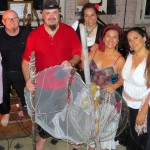
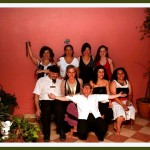
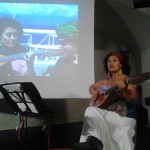
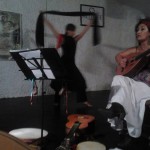
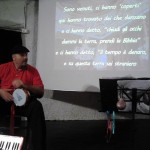
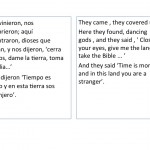
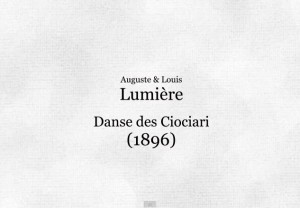
Sorry, the comment form is closed at this time.